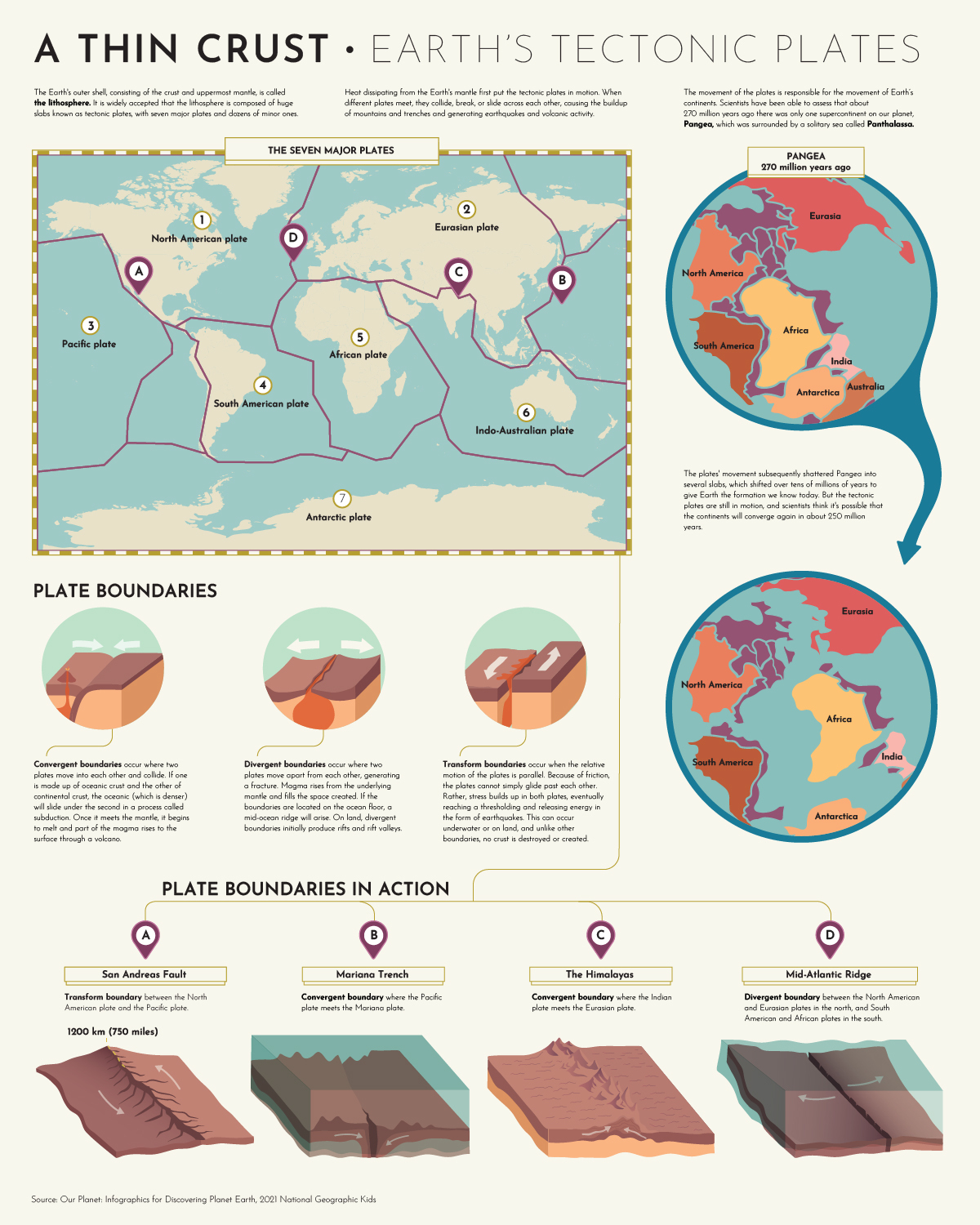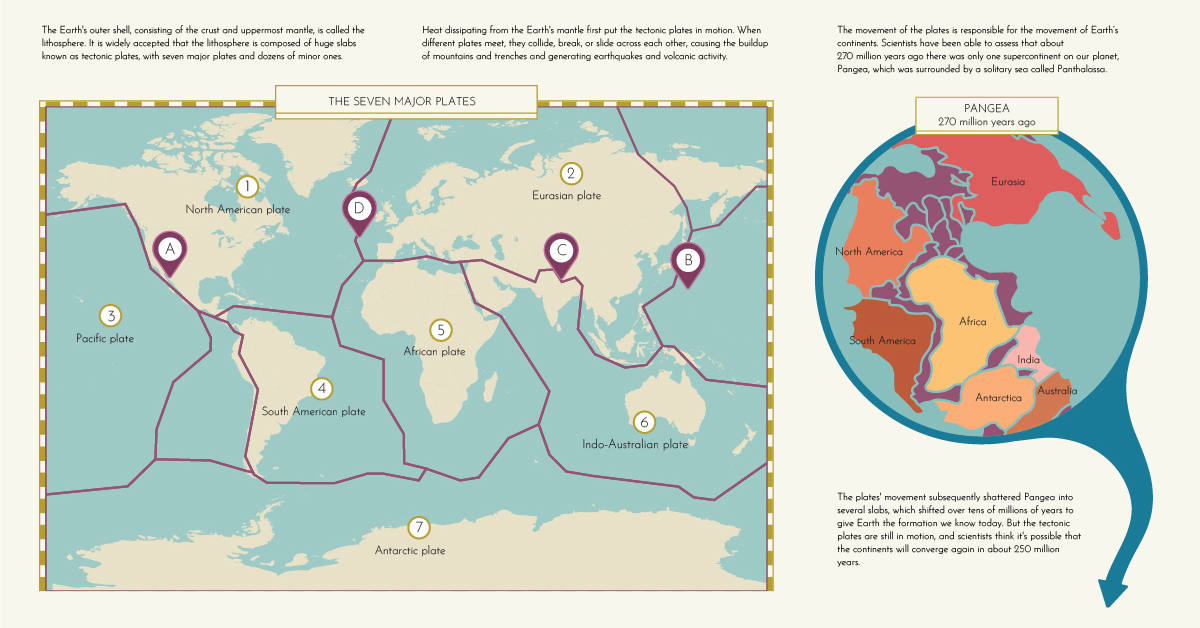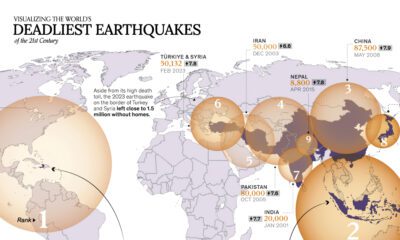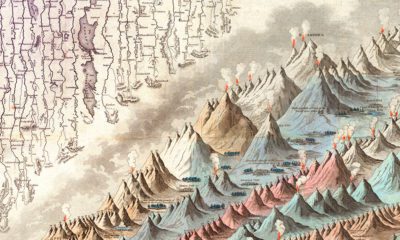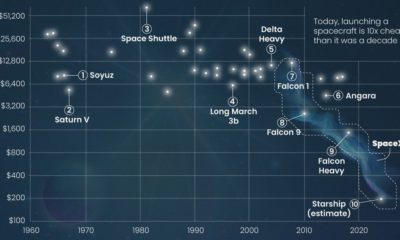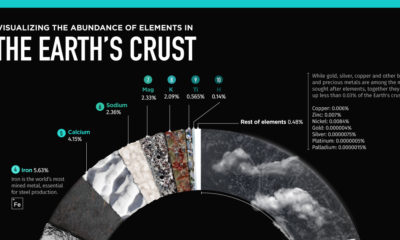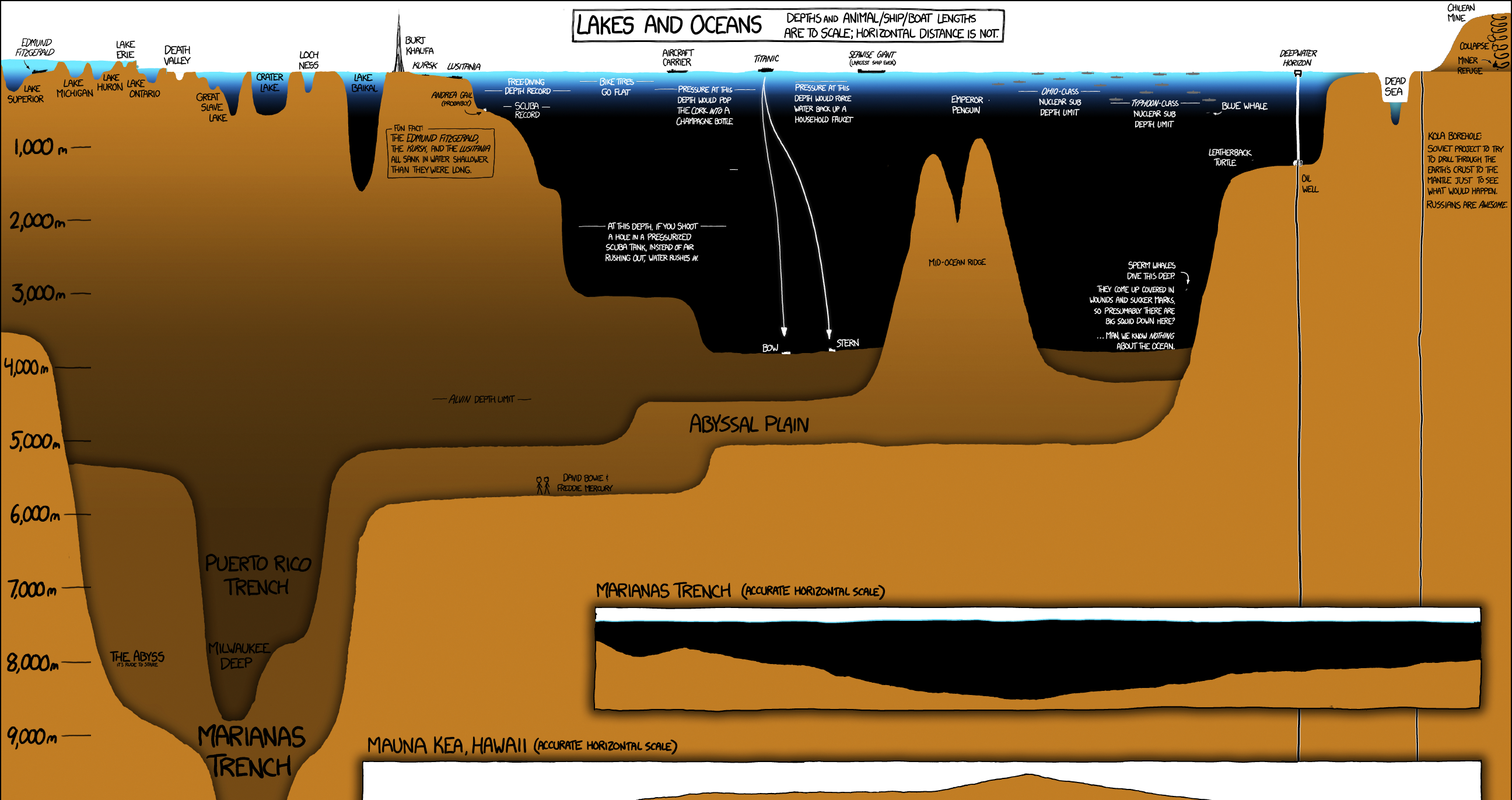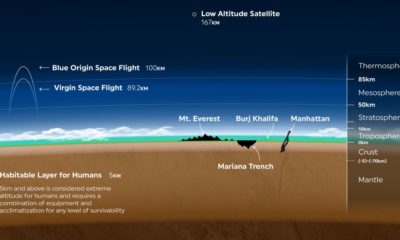Misc
Explainer: Earth’s Tectonic Plates
Click to view a larger version of the graphic.
Explainer: Earth’s Tectonic Plates
It’s widely understood that Earth’s lithosphere (or outer crust) is made up of moving slabs of rock, better known as the tectonic plates.
These plates only move a couple of inches each year. However, these tiny movements add up over time and cause some of Earth’s most well-known phenomena. Today, the Earth looks a lot different than it did millions of years ago.
This graphic by Giulia De Amicis provides a brief explanation of plate tectonic theory and shows a map of the seven major plates.
Plate Tectonic Theory
In the early 20th century, German geologist Alfred Wegener published a paper on his theory called continental drift—a hypothesis that Earth’s continents were moving across Earth, and sometimes, even colliding into one another.
According to Wegener’s theory, Earth’s continents were once joined as a single, giant landmass, which he called Pangaea. But over time, Pangaea broke apart and formed the continents as we know them today.
Wegener couldn’t explain why this phenomenon was happening, so at the time, his theory was heavily criticized by his colleagues. But over the years, technological advances allowed scientists to study the Earth more closely, and geologists started to build on Wegener’s theory.
Discoveries like seafloor spreading helped explain the “why” behind continental movement, and eventually, Wegener’s initial continental drift theory morphed into plate tectonic theory. And now, the idea that Earth’s crust is slowly moving beneath our feet is widely accepted.
The Seven Major Tectonic Plates
There are seven major plates, and dozens of minor plates, that make up the outer crust of the Earth. The big seven are:
- North American plate
- Eurasian plate
- Pacific plate
- South American plate
- African plate
- Indo-Australian plate
- Antarctic plate
The areas between these plates are known as plate boundaries, and their interactions cause some crazy things to happen on Earth’s surface. There are three types of plate boundaries:
1. Divergent boundary
A divergent boundary is when two plates move away from each other, which creates a fracture in the lithosphere.
A well-known divergent boundary is the Mid-Atlantic Ridge, which runs approximately 10,000 miles from the Arctic Ocean all the way down to the south of Africa.
2. Convergent boundary
A convergent boundary is when two plates collide with one another.
If the collision is between oceanic crust and continental crust, the denser oceanic crust slides underneath the other plate, which is a process known as subduction.
When two continental crusts collide, the rock folds and lifts at the boundary, creating mountains like the Himalayas (where the Indian plate meets the Eurasian plate).
3. Transform Boundary
When two plates move parallel to one another, their meeting point is called a transform boundary.
The friction causes tension. Eventually, that tension needs to be released, which can cause earthquakes. The San Andreas Fault is a well-known major transform boundary between the North American and Pacific plates—it caused the infamous San Francisco earthquake of 1906.

This article was published as a part of Visual Capitalist's Creator Program, which features data-driven visuals from some of our favorite Creators around the world.
VC+
VC+: Get Our Key Takeaways From the IMF’s World Economic Outlook
A sneak preview of the exclusive VC+ Special Dispatch—your shortcut to understanding IMF’s World Economic Outlook report.

Have you read IMF’s latest World Economic Outlook yet? At a daunting 202 pages, we don’t blame you if it’s still on your to-do list.
But don’t worry, you don’t need to read the whole April release, because we’ve already done the hard work for you.
To save you time and effort, the Visual Capitalist team has compiled a visual analysis of everything you need to know from the report—and our VC+ Special Dispatch is available exclusively to VC+ members. All you need to do is log into the VC+ Archive.
If you’re not already subscribed to VC+, make sure you sign up now to access the full analysis of the IMF report, and more (we release similar deep dives every week).
For now, here’s what VC+ members get to see.
Your Shortcut to Understanding IMF’s World Economic Outlook
With long and short-term growth prospects declining for many countries around the world, this Special Dispatch offers a visual analysis of the key figures and takeaways from the IMF’s report including:
- The global decline in economic growth forecasts
- Real GDP growth and inflation forecasts for major nations in 2024
- When interest rate cuts will happen and interest rate forecasts
- How debt-to-GDP ratios have changed since 2000
- And much more!
Get the Full Breakdown in the Next VC+ Special Dispatch
VC+ members can access the full Special Dispatch by logging into the VC+ Archive, where you can also check out previous releases.
Make sure you join VC+ now to see exclusive charts and the full analysis of key takeaways from IMF’s World Economic Outlook.
Don’t miss out. Become a VC+ member today.
What You Get When You Become a VC+ Member
VC+ is Visual Capitalist’s premium subscription. As a member, you’ll get the following:
- Special Dispatches: Deep dive visual briefings on crucial reports and global trends
- Markets This Month: A snappy summary of the state of the markets and what to look out for
- The Trendline: Weekly curation of the best visualizations from across the globe
- Global Forecast Series: Our flagship annual report that covers everything you need to know related to the economy, markets, geopolitics, and the latest tech trends
- VC+ Archive: Hundreds of previously released VC+ briefings and reports that you’ve been missing out on, all in one dedicated hub
You can get all of the above, and more, by joining VC+ today.
-

 Energy1 week ago
Energy1 week agoThe World’s Biggest Nuclear Energy Producers
-

 Money2 weeks ago
Money2 weeks agoWhich States Have the Highest Minimum Wage in America?
-

 Technology2 weeks ago
Technology2 weeks agoRanked: Semiconductor Companies by Industry Revenue Share
-

 Markets2 weeks ago
Markets2 weeks agoRanked: The World’s Top Flight Routes, by Revenue
-

 Countries2 weeks ago
Countries2 weeks agoPopulation Projections: The World’s 6 Largest Countries in 2075
-

 Markets2 weeks ago
Markets2 weeks agoThe Top 10 States by Real GDP Growth in 2023
-

 Demographics2 weeks ago
Demographics2 weeks agoThe Smallest Gender Wage Gaps in OECD Countries
-

 United States2 weeks ago
United States2 weeks agoWhere U.S. Inflation Hit the Hardest in March 2024
